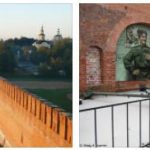As the largest republic of the Soviet Union, Russia was involved in its industrial production (1990) with 62% and agricultural production with 50%. The economy, which has been controlled according to central plan specifications since 1928 (first five-year plan), was primarily geared towards the development of the basic materials, capital goods, heavy and armaments industries, whereas investments in the production of consumer goods were extremely low. The one-sided investment policy and the organization of the entire economy as a structure of bureaucratically controlled industry monopolies have led to stagnation and an ever-increasing decline in economic performance since the 1970s. The collapse of the socialist economic area (within the framework of the Comecon), the reorientation of many states that formerly belonged to the Soviet sphere of influence and finally the collapse of the Soviet Union resulted in the breakdown of the production interdependencies that had grown over decades and which had been organized based on the division of labor. The dissolution of many political and economic institutions as well as the previous legal system led to a severe transformation crisis in the first half of the 1990s. Ethnic tensions and wars in some Russian regions also worsened the economic situation. The result was a profound deindustrialization process, permanently high inflation with a sometimes hyperinflationary character, and a halving of the gross domestic product (GDP) and a serious deterioration in the social situation of many sections of the population. Unstable political framework conditions, a lack of trust in the existing legal system, an opaque tax system, a poorly company-oriented infrastructure and a poorly developed banking system, in addition to a lack of management experience, the continuing monopoly structures in many industries and a reluctance to invest on the part of Russian companies, caused serious economic problems and barriers to inflow foreign investment.
The drastic devaluation of the ruble in 1998, as a result of which imports fell sharply and domestic production rose again, as well as the long-term high world market prices for oil and natural gas, together with a noticeable political consolidation and a strengthening of market economy institutions, brought about a gradual stabilization of the Russian economy. In the structure of GDP, the extraction and primary processing of energy sources (crude oil, natural gas, coal) and other raw materials continue to dominate, although the manufacturing and technology-oriented sectors as well as the service sector are gaining in importance. Annual economic growth in 2007–11 ranged between –7.8% (2009; international economic and financial crisis) and 8.5% (2007). In particular, the low world market prices for energy raw materials dampened annual economic growth to an average of 1.8% (2012–14; 2017: 1.5%). The Ukraine crisis and subsequent Western sanctions against Russia continued to worsen the situation. However, economic development varies greatly from region to region; in addition to the large metropolitan regions (especially Moscow and Saint Petersburg, but also Novosibirsk, Nizhny Novgorod, etc.), above all the oil and gas production regions (e.g. Tatarstan and Western Siberia) as well as some industrial regions (e.g. the Samara and Yekaterinburg regions) show moderate growth, whereas many are old industrialized, structurally weak or peripheral Regions without sustainable economic prospects. Visit picktrue.com for economy of eastern Europe.
The share of the shadow economy in the value added is very high, mainly due to an inefficient tax policy; It is estimated that the informal sector has a share of 22-25% of GDP. The privatization of the Russian economy, which began in 1992, is essentially considered complete. With the redistribution of the power of disposal over economic resources (land, mineral resources, companies), new social groupings emerged. Due to the undeveloped legal framework for privatization, in many cases there was unregulated private appropriation of economic assets and, as a result, large sections of the population were impoverished. Control over resources is concentrated on a few groups of the business elite (oligarchs), whose influence on national politics is very great. For this reason, a re-nationalization was initiated in some areas from 2002 (especially in the oil and gas sector), so that today around half of GDP is generated in large state-owned companies.
Foreign trade: Due to the raw material exports, the foreign trade balance is consistently positive. Foreign trade turnover reached US $ 587 billion in 2017, of which US $ 359 billion was accounted for by exports and US $ 228 billion by imports. The export of natural gas, oil and oil products accounts for the largest share of foreign trade (59% of the export value). The most important import goods in 2017 were machinery and vehicles (19.8% of all imports) as well as electronic and electrotechnical products (11.7%), as well as food and consumer goods. The most important trading partners are China, Germany, the Netherlands and Belarus. The share of EU countries in foreign trade rose to 52% by 2011, but then fell to 40.9% (2016) due to low raw material prices and sanctions.




